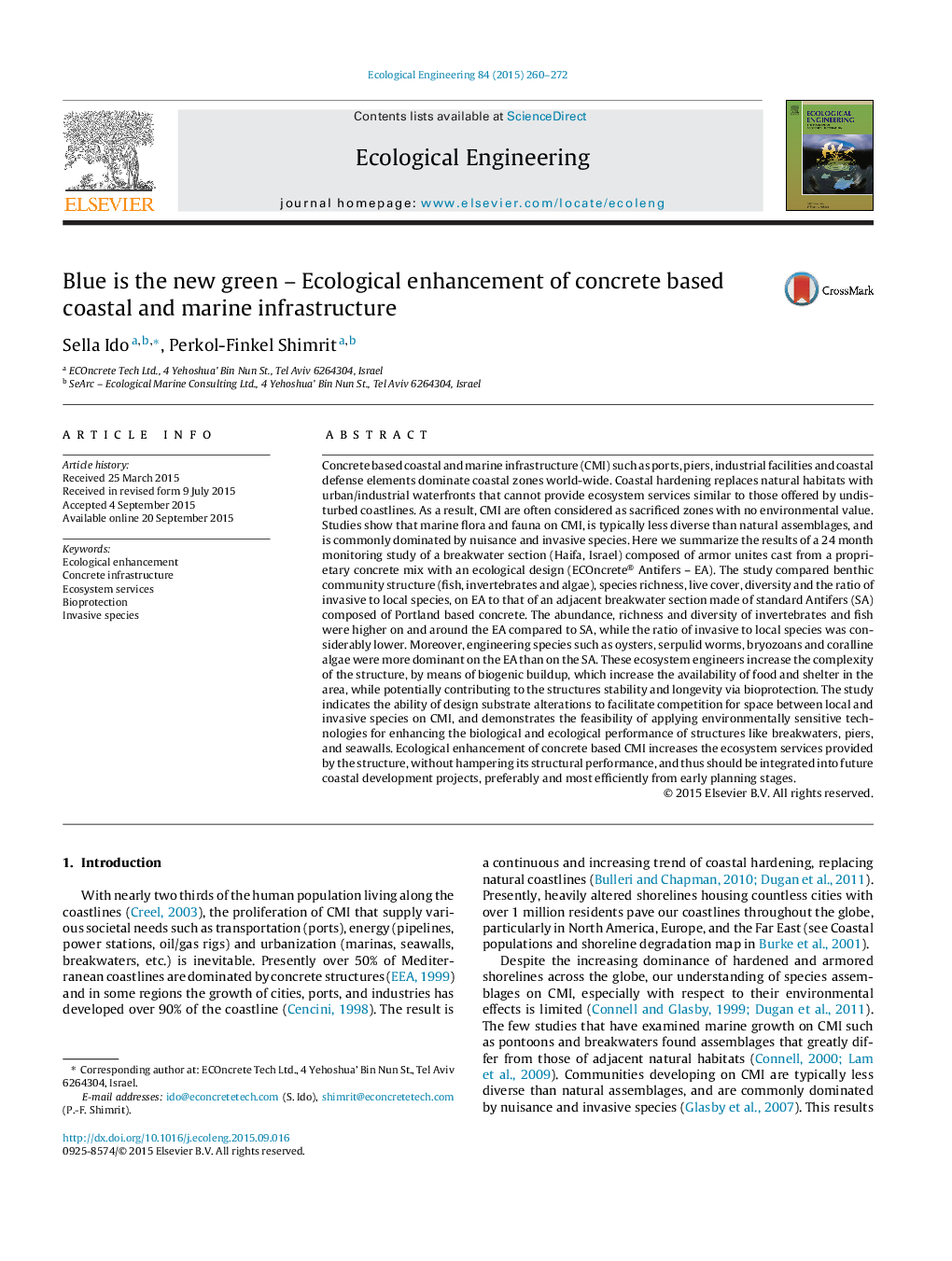| Article ID | Journal | Published Year | Pages | File Type |
|---|---|---|---|---|
| 4388791 | Ecological Engineering | 2015 | 13 Pages |
Concrete based coastal and marine infrastructure (CMI) such as ports, piers, industrial facilities and coastal defense elements dominate coastal zones world-wide. Coastal hardening replaces natural habitats with urban/industrial waterfronts that cannot provide ecosystem services similar to those offered by undisturbed coastlines. As a result, CMI are often considered as sacrificed zones with no environmental value. Studies show that marine flora and fauna on CMI, is typically less diverse than natural assemblages, and is commonly dominated by nuisance and invasive species. Here we summarize the results of a 24 month monitoring study of a breakwater section (Haifa, Israel) composed of armor unites cast from a proprietary concrete mix with an ecological design (ECOncrete® Antifers – EA). The study compared benthic community structure (fish, invertebrates and algae), species richness, live cover, diversity and the ratio of invasive to local species, on EA to that of an adjacent breakwater section made of standard Antifers (SA) composed of Portland based concrete. The abundance, richness and diversity of invertebrates and fish were higher on and around the EA compared to SA, while the ratio of invasive to local species was considerably lower. Moreover, engineering species such as oysters, serpulid worms, bryozoans and coralline algae were more dominant on the EA than on the SA. These ecosystem engineers increase the complexity of the structure, by means of biogenic buildup, which increase the availability of food and shelter in the area, while potentially contributing to the structures stability and longevity via bioprotection. The study indicates the ability of design substrate alterations to facilitate competition for space between local and invasive species on CMI, and demonstrates the feasibility of applying environmentally sensitive technologies for enhancing the biological and ecological performance of structures like breakwaters, piers, and seawalls. Ecological enhancement of concrete based CMI increases the ecosystem services provided by the structure, without hampering its structural performance, and thus should be integrated into future coastal development projects, preferably and most efficiently from early planning stages.
